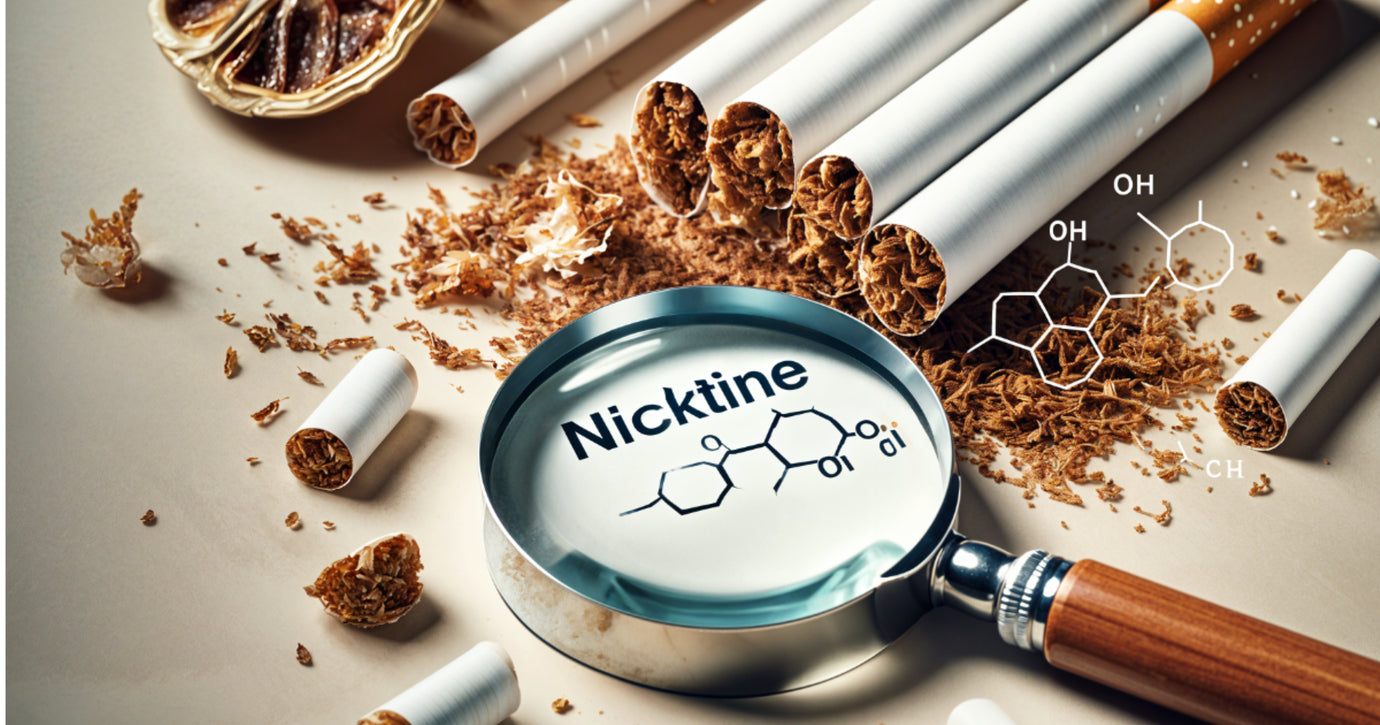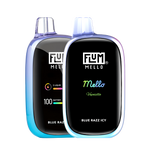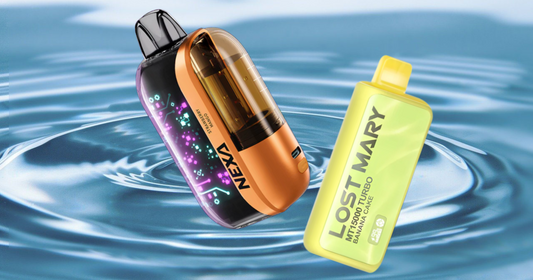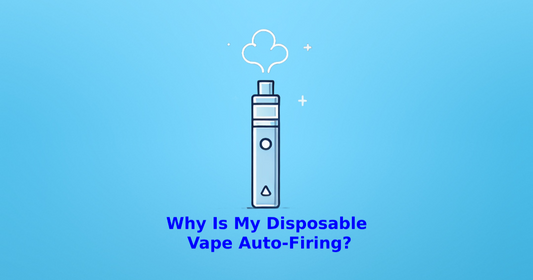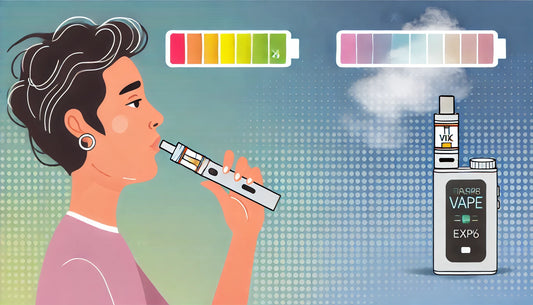Introduction
Nicotine, a chemical compound found predominantly in tobacco, is known for its highly addictive properties. The nicotine content in a cigarette plays a crucial role in this addiction, making it difficult for smokers to quit. When you inhale smoke from a cigarette, your body quickly absorbs the nicotine into your bloodstream. Within seconds, it reaches your brain and reinforces the urge to continue smoking.
Smoking directly causes nicotine addiction. The amount of nicotine in cigarettes is extremely important because it determines how much of this addictive substance enters your body with each puff. If a cigarette has high levels of nicotine, it can make you dependent on it faster, leading to smoking more and facing greater health risks.
Key Takeaway: In this article, we will uncover the truth about the amount of nicotine present in cigarettes and explore its impact on our health. Understanding these factors can help you make informed decisions about smoking and its potential consequences.
Understanding Nicotine Content in Cigarettes
Nicotine Absorption
When you smoke a cigarette, nicotine enters your lungs and quickly gets into your bloodstream. It only takes a few seconds for nicotine to reach your brain. This fast delivery is a major factor in why nicotine is so addictive.
Factors Influencing Nicotine Absorption
Several factors can affect how quickly nicotine enters your body:
- Inhalation Depth: Taking deeper breaths when smoking allows more nicotine to enter your bloodstream.
- Smoking Frequency: The more often you smoke, the higher your overall nicotine levels become.
- Cigarette Design: Filters and ventilation holes on cigarettes can change how much nicotine you absorb.
- Individual Metabolism: Your body's metabolism can impact how fast it processes nicotine.
Role of Tobacco Leaves
The type and quality of tobacco leaves used in a cigarette have a big effect on its nicotine content. Darker tobacco leaves, like the ones used in cigar tobacco, usually have more nicotine than lighter leaves. The way the tobacco is cured also plays a part in nicotine levels. Air-cured tobacco generally has less nicotine than tobacco that's been cured with fire.
Understanding these factors helps explain why different cigarette brands have different amounts of nicotine and why some smokers may be more hooked than others.
The Impact of Nicotine on the Body and Mind
Nicotine has a powerful effect on brain chemistry, specifically on the brain's reward system. When you smoke a cigarette, nicotine quickly reaches your brain and triggers the release of dopamine, a neurotransmitter associated with pleasure and reward. This flood of dopamine reinforces addictive behavior, making it hard to stop smoking.
How Nicotine Affects Your Health
Immediate effects:
- Increased heart rate and blood pressure
- Improved alertness and thinking ability
- Temporary feelings of relaxation or stress relief
Long-term effects:
- Higher risk of heart diseases
- Reduced lung function and breathing problems
- Possible decline in cognitive function due to prolonged exposure
Medical experts strongly warn about the significant dangers of nicotine use. According to Dr. Nora Volkow, director of the National Institute on Drug Abuse (NIDA), "nicotine is highly addictive, making it extremely difficult for smokers to quit despite knowing the health hazards."
The impact of nicotine on health goes beyond physical illnesses. It can also lead to psychological dependence, trapping individuals in an addiction cycle that negatively affects their overall well-being.
Nicotine Levels in Different Tobacco Products
1. Cigarettes
Different cigarette brands offer a wide range of nicotine levels, making it essential to understand how much nicotine you are consuming with each puff. The amount of nicotine in a single cigarette can vary significantly:
- High Nicotine Brands: Some brands, such as Marlboro Red and Camel Full Flavor, are known for their higher nicotine content. These cigarettes can contain up to 1.2 mg of nicotine per cigarette.
- Low Nicotine Brands: On the other end of the spectrum, brands like Marlboro Light and Camel Blue have lower nicotine levels, averaging around 0.6 mg per cigarette.
The average amount of nicotine found in a single cigarette is typically between 10 to 12 mg. However, it's crucial to note that not all of this nicotine is absorbed by the body. Studies show that a person absorbs approximately 1.1 to 1.8 mg of nicotine by the end of each cigarette.
Factors Influencing Nicotine Levels
Several factors influence the overall nicotine content in cigarettes:
- Tobacco Leaf Quality: The type and quality of tobacco leaf used can significantly affect the nicotine content. Higher-quality leaves usually contain more nicotine.
- Manufacturing Process: Different manufacturing techniques can either increase or decrease the amount of nicotine delivered in each puff.
- Cigarette Design: Filters and paper types also play a role in determining how much nicotine actually reaches the smoker.
Understanding these variables helps in making informed choices about which brands you might want to avoid if you're trying to limit your nicotine intake.
Nicotine Absorption Rates
When you smoke a cigarette, your lungs quickly absorb the nicotine into your bloodstream. This rapid absorption means that within seconds, nicotine reaches your brain, reinforcing addictive behaviors by stimulating the brain's reward system.
"In addition to nicotine, cigarettes contain hundreds of other substances, many of which can be harmful to health." - Health Experts
Knowing these details provides better insight into why quitting smoking can be challenging and highlights the importance of being aware of what you're inhaling with each cigarette.
By understanding the range and average levels of nicotine in different cigarette brands, you can better manage your consumption and make more informed decisions about your smoking habits.
2. E-cigarettes
E-cigarettes come in a wide range of nicotine strengths, so it's important to know what you're getting. Disposable vape pens and refillable mods can have very different levels of nicotine. Some e-liquids don't have any nicotine at all, while others can contain as much as 50 mg/mL or more.
The reason for this wide range is that refillable mods allow users to customize their vaping experience. You can choose e-liquids with different nicotine strengths or even mix your own flavors. But this flexibility also means that it's easy to accidentally vape too much nicotine, which can be harmful.
Potential Health Risks:
- Nicotine Overdose: Using e-liquids with high levels of nicotine can lead to nicotine poisoning, causing symptoms like nausea, increased heart rate, and dizziness.
- Long-term Effects: We're still studying the long-term health effects of vaping, but early research suggests that it may have similar risks to traditional smoking, such as lung and heart problems.
Expert Opinions:
Many health experts are worried about how addictive nicotine is, no matter how it's delivered. They're also concerned that the wide availability and appealing flavors of e-cigarettes could attract young people and increase the number of teens addicted to nicotine.
It's important to understand the different nicotine levels in e-cigarettes and the potential risks they pose. This knowledge will help you make better choices about using tobacco products.
3. NRT Products and Medications
Nicotine Replacement Therapy (NRT) products provide a controlled dose of nicotine to help alleviate withdrawal symptoms and reduce the urge to smoke. These products come in various forms, each designed to suit different preferences and levels of nicotine dependency:
Nicotine Gum
Chewing nicotine gum releases small amounts of nicotine into the bloodstream through the lining of the mouth. It offers quick relief for sudden cravings.
Nicotine Patches
These adhesive patches deliver a steady dose of nicotine throughout the day via the skin. They are convenient for users who prefer a continuous, low-maintenance option.
Nicotine Inhalers
Inhalers mimic the hand-to-mouth action of smoking, providing a measured dose of nicotine when puffed. They can be particularly helpful for those who miss the physical act of smoking.
These NRT products work by delivering controlled doses of nicotine to alleviate withdrawal symptoms without exposing users to the harmful chemicals present in cigarette smoke. This approach helps manage cravings more effectively, making it easier to quit smoking.
It is important to note that NRT products are specifically designed to aid in smoking cessation and differ from other tobacco products in terms of nicotine content:
- Traditional cigarettes contain an average of 10 to 12 mg of nicotine.
- E-cigarettes vary widely depending on the product type, with some offering high concentrations that can pose health risks.
- NRT products are designed to deliver safer, measured doses aimed at facilitating smoking cessation.
By incorporating NRT products into your quit-smoking arsenal, you can take a significant step towards reducing your dependency on nicotine and ultimately achieving a smoke-free life.
The Link Between Smoking, Nicotine, and Health Risks
Nicotine is the main substance in tobacco that causes addiction. It stimulates the release of dopamine, creating a pleasurable feeling that encourages continued use. This addictive nature makes it difficult for smokers to quit.
The primary health risks of smoking come from the other harmful chemicals found in tobacco smoke. These include:
- Tar: Contributes to lung diseases such as chronic bronchitis and emphysema.
- Carbon monoxide: Reduces oxygen transport in the blood, leading to cardiovascular problems.
- Formaldehyde and benzene: Known cancer-causing agents that increase the risk of developing cancer.
While nicotine itself does not directly cause these serious diseases, its role in maintaining addiction means smokers are constantly exposed to these poisonous substances.
Experts agree that quitting smoking is crucial for reducing health risks. However, the addictive nature of nicotine complicates cessation efforts. Understanding this relationship between nicotine and other harmful chemicals is key to addressing both addiction and the broader health impacts of smoking.
Methods to Quit Smoking and Reduce Nicotine Intake
Practical Tips and Strategies
Overcoming nicotine addiction can be challenging, but several methods can help you quit smoking for good:
- Set a Quit Date: Choose a date to stop smoking and stick to it.
- Identify Triggers: Recognize what situations or emotions make you want to smoke and find alternative coping mechanisms.
- Seek Support: Engage with support groups, friends, or family who can encourage and motivate you.
- Stay Active: Exercise can reduce nicotine cravings and improve mood.
- Use Distractions: Keep your hands and mouth busy with hobbies or chewing gum.

Health Benefits of Quitting Smoking
Quitting smoking leads to numerous health improvements that can be experienced both in the short term and long term:
Short-term Benefits:
- Improved Lung Function: Your lung capacity starts to improve within weeks.
- Better Circulation: Blood circulation enhances almost immediately.
- Heightened Senses: Taste and smell sharpen within days.
Long-term Benefits:
- Reduced Risk of Diseases: Lower risk of heart disease, stroke, and cancer.
- Enhanced Immune System: Your body's ability to fight infections strengthens over time.
- Increased Longevity: Non-smokers generally live longer than smokers.
1. Utilizing Nicotine Replacement Therapy (NRT)
Nicotine Replacement Therapy (NRT) can be a valuable tool for managing nicotine cravings during the quitting process. NRT products deliver controlled doses of nicotine without the harmful chemicals found in cigarettes. Common NRT options include:
- Nicotine Gum
- Nicotine Patches
- Nicotine Inhalers
- Nicotine Lozenges
How NRT Works
NRT helps alleviate withdrawal symptoms by providing a low dose of nicotine, which reduces the urge to smoke. This gradual reduction allows you to wean off nicotine dependence more comfortably.
Guidance from Health Professionals
It's crucial to seek advice from a healthcare provider when using NRT. They can help determine the most suitable form and dosage based on your smoking habits and overall health profile.
Health professionals can also provide additional resources and support systems tailored to your needs, ensuring you have the best chance at quitting successfully.
By incorporating these strategies and leveraging available resources like NRT under professional guidance, overcoming nicotine addiction becomes a more attainable goal.
Conclusion
Understanding nicotine content in cigarettes is crucial for anyone looking to quit smoking. Nicotine, being highly addictive, plays a significant role in sustaining the smoking habit. Awareness of how much nicotine you are consuming can empower you to make informed decisions about your health.
Utilize available resources and support systems to help break free from nicotine addiction. These might include:
- Nicotine Replacement Therapy (NRT): Options such as gum, patches, and inhalers provide controlled doses of nicotine to ease withdrawal symptoms.
- Counseling and Support Groups: Engaging with professionals and peers who understand the challenges of quitting can offer valuable encouragement and strategies.
Public health organizations continue to advocate for stricter regulations on nicotine levels in tobacco products. Their efforts aim at reducing the harm caused by smoking and supporting those who wish to quit. Understanding these measures can further bolster your journey toward a smoke-free life.
